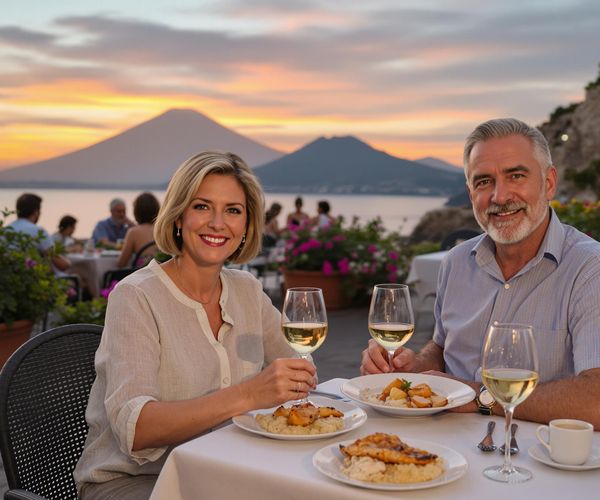
Capri: The Jewel of the Tyrrhenian Sea
Discover Capri, a stunning island in the Tyrrhenian Sea known for its natural beauty, luxurious amenities, and rich history. An unforgettable destination for relaxation and adventure.
Capri is a stunning island located in the Tyrrhenian Sea, off the coast of Italy. Famous for its rugged landscape, upscale hotels, and shopping, it is a favorite destination for travelers seeking both relaxation and adventure. The island is known for its natural beauty, including the breathtaking Blue Grotto, a sea cave illuminated by a unique blue light. Visitors to Capri can explore the charming town of Anacapri, which offers stunning views and a more laid-back atmosphere. The island also boasts several historical sites, such as the Villa Jovis, the ancient residence of the Roman Emperor Tiberius. For those who love the outdoors, the island's many walking trails provide an opportunity to enjoy panoramic vistas of the sea and the surrounding cliffs. Capri is also a haven for fashion and gastronomy enthusiasts. The Piazzetta, the main square of Capri town, is lined with chic cafes and boutiques. Here, you can enjoy a leisurely meal while people-watching or indulge in some high-end shopping. With its combination of natural wonders, historical sites, and modern luxuries, Capri offers a unique and unforgettable experience for every traveler.
Local tips in Capri
- Visit the Blue Grotto early in the morning to avoid crowds and catch the best light.
- Wear comfortable shoes; Capri's terrain is hilly and many attractions require walking.
- Take the chairlift up to Monte Solaro for unbeatable views of the island.
- Try the local specialty, Limoncello, a lemon liqueur made from the island's famous lemons.
- Book your accommodations well in advance, especially during the peak summer months.
Capri: The Jewel of the Tyrrhenian Sea
Capri is a stunning island located in the Tyrrhenian Sea, off the coast of Italy. Famous for its rugged landscape, upscale hotels, and shopping, it is a favorite destination for travelers seeking both relaxation and adventure. The island is known for its natural beauty, including the breathtaking Blue Grotto, a sea cave illuminated by a unique blue light. Visitors to Capri can explore the charming town of Anacapri, which offers stunning views and a more laid-back atmosphere. The island also boasts several historical sites, such as the Villa Jovis, the ancient residence of the Roman Emperor Tiberius. For those who love the outdoors, the island's many walking trails provide an opportunity to enjoy panoramic vistas of the sea and the surrounding cliffs. Capri is also a haven for fashion and gastronomy enthusiasts. The Piazzetta, the main square of Capri town, is lined with chic cafes and boutiques. Here, you can enjoy a leisurely meal while people-watching or indulge in some high-end shopping. With its combination of natural wonders, historical sites, and modern luxuries, Capri offers a unique and unforgettable experience for every traveler.
When is the best time to go to Capri?
Iconic landmarks you can’t miss
Piazzetta di Capri
Explore the vibrant Piazzetta di Capri, a charming plaza offering breathtaking views, high-end shopping, and delightful cafés in the heart of Capri.
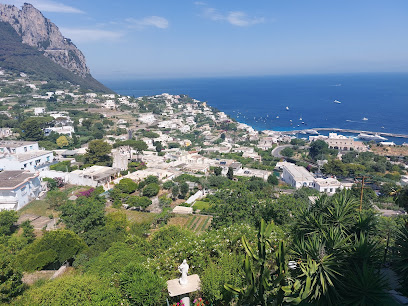
Giardini di Augusto
Explore the breathtaking Giardini di Augusto in Capri, where stunning views and lush gardens create a serene escape in paradise.
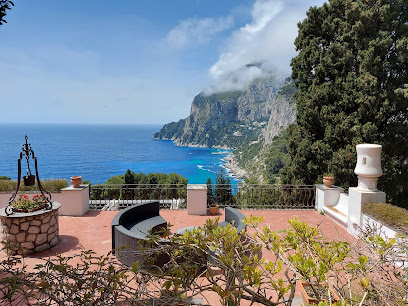
Villa San Michele
Discover the serene beauty and rich history of Villa San Michele, a captivating museum in Anacapri with breathtaking views and enchanting gardens.
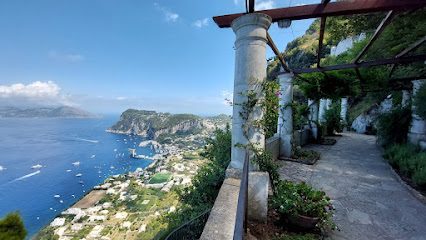
Belvedere Tragara
Experience breathtaking views of Capri's stunning coastline and iconic Faraglioni rocks at Belvedere Tragara, a must-visit observation deck.
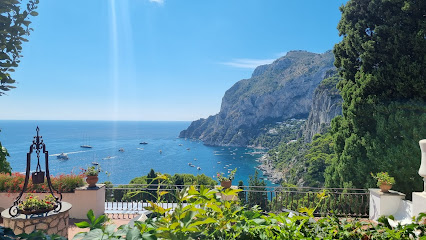
Natural Arch
Experience the breathtaking Natural Arch in Capri, a stunning historical landmark perfect for hiking and enjoying breathtaking Mediterranean views.
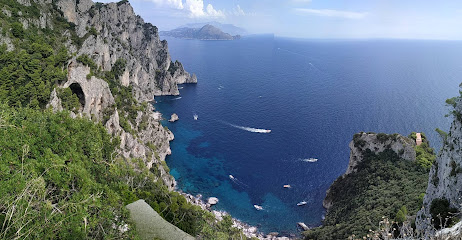
Monte Solaro
Experience the captivating beauty of Monte Solaro, Capri's highest point, offering stunning views and serene landscapes for the perfect getaway.
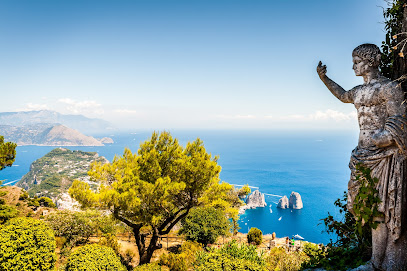
Lido del Faro
Experience the serene beauty of Lido del Faro, a stunning coastal destination in Anacapri, perfect for relaxation, weddings, and breathtaking Mediterranean views.

Villa Jovis
Discover the grandeur of Villa Jovis, a historical gem on Capri, where Roman luxury meets breathtaking views of the Bay of Naples.
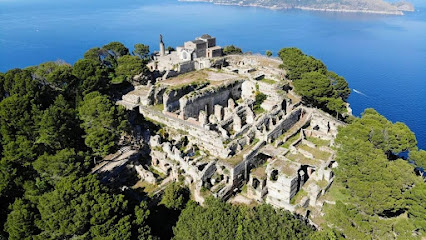
Blue Grotto
Experience the breathtaking beauty of the Blue Grotto in Anacapri, where enchanting azure waters and stunning natural formations await.
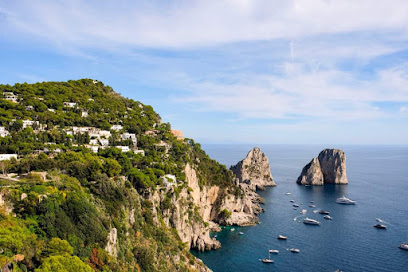
Church San Michele
Experience the serene beauty and breathtaking architecture of Church San Michele in Anacapri, a spiritual haven on the enchanting Isle of Capri.
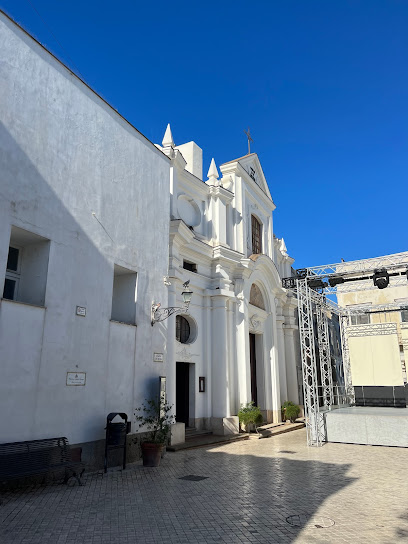
Scala Fenicia
Discover the enchanting Scala Fenicia in Ritten, South Tyrol - a serene escape with stunning views and rich history waiting to be explored.
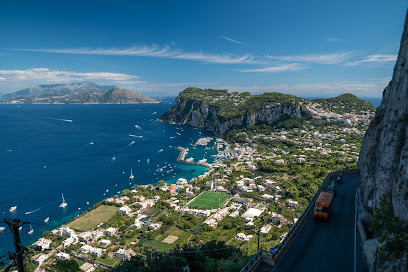
Villa Lysis
Experience the enchanting beauty and historical charm of Villa Lysis, a captivating destination on the stunning island of Capri.
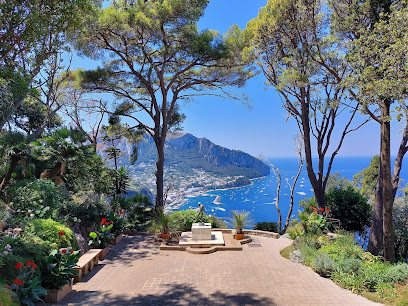
Belvedere di Punta Cannone
Discover the breathtaking views at Belvedere di Punta Cannone, a scenic spot in Capri, where the Mediterranean meets stunning cliffs and lush landscapes.
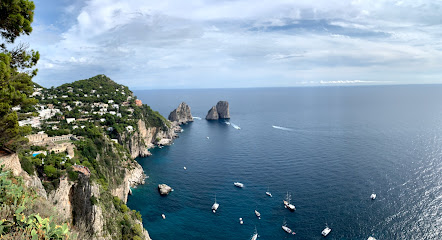
Grotta Bianca
Explore the magical Grotta Bianca in Capri, where stunning limestone formations meet crystal-clear turquoise waters in a breathtaking natural wonder.
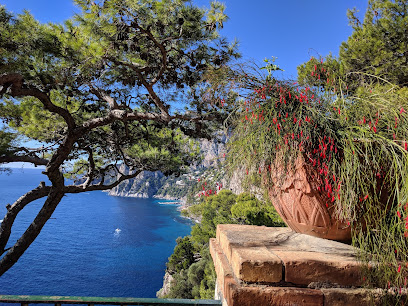
La Canzone del Mare
Discover La Canzone del Mare, a stunning lido in Capri offering breathtaking views, exquisite dining, and relaxing Mediterranean vibes for the perfect escape.
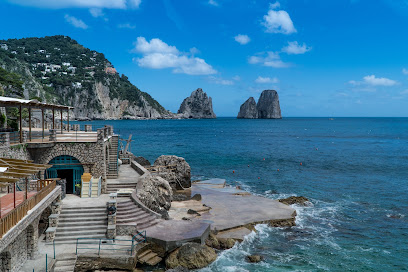
Unmissable attractions to see
Amalfi Coast
Discover the stunning Amalfi Coast, a UNESCO World Heritage site known for its dramatic cliffs, charming villages, and exquisite Italian cuisine.
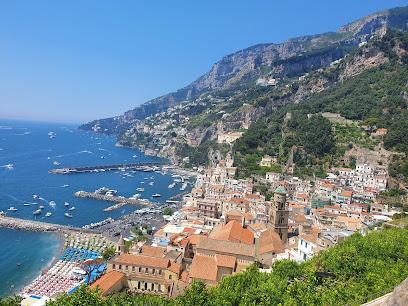
Archaeological Park of Pompeii
Discover the ancient wonders of Pompeii, where history comes alive amidst the ruins of a city frozen in time.
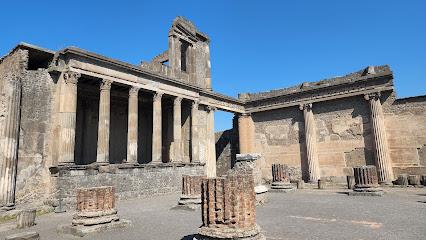
Sansevero Chapel Museum
Discover the exquisite artistry and historical significance of the Sansevero Chapel Museum in Naples, home to the breathtaking Veiled Christ and more.
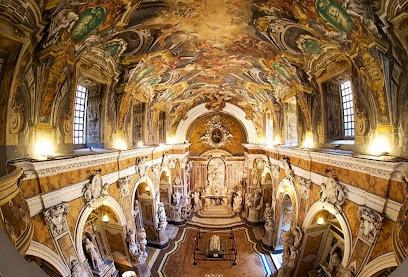
Ovo Castle
Discover the historical charm and breathtaking views of Ovo Castle, a captivating fortress that tells the story of Naples’ rich heritage.
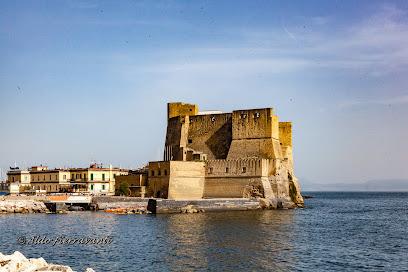
Vesuvius National Park
Discover the stunning beauty and historical significance of Vesuvius National Park, home to the iconic volcano and breathtaking views of Naples.

Museo Archeologico Nazionale di Napoli
Explore the splendor of ancient Rome at the Museo Archeologico Nazionale di Napoli, home to unparalleled archaeological treasures and rich history.
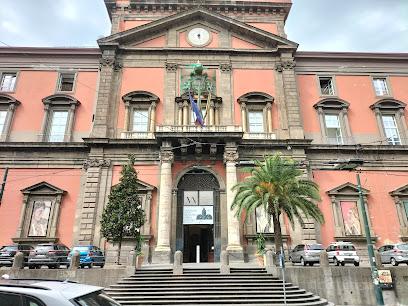
Castel Sant'Elmo
Discover Castel Sant'Elmo: A historic fortress in Naples offering stunning views, rich heritage, and fascinating exhibits.
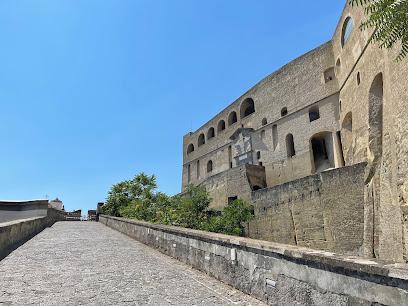
Castel Nuovo
Experience the grandeur of Castel Nuovo, a historical gem in Naples, showcasing medieval architecture and rich cultural heritage.
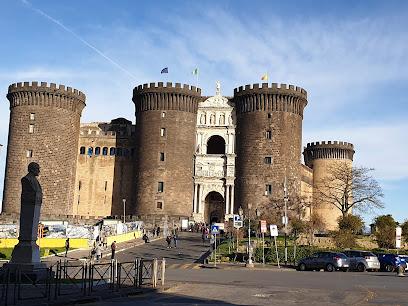
Museo e Real Bosco di Capodimonte
Explore the rich art and history at Museo e Real Bosco di Capodimonte, a stunning blend of culture and nature in the heart of Naples.
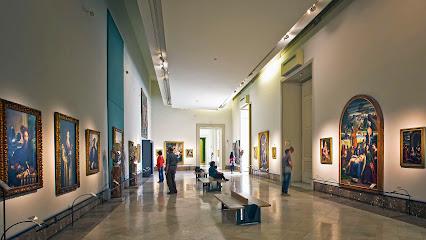
Underground Naples
Unearth the incredible history of Naples by exploring its ancient underground tunnels, aqueducts, and artistic treasures beneath the city streets.
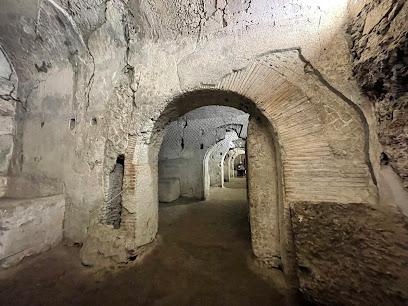
Duomo di Napoli
Explore the Duomo di Napoli: A breathtaking Gothic cathedral filled with art, history, and spiritual significance in the heart of Naples.
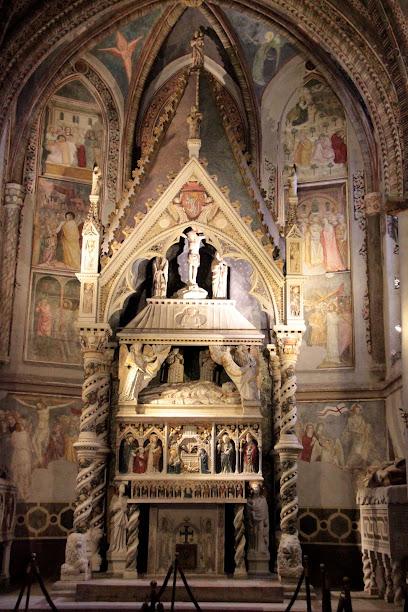
Villa Rufolo
Explore the enchanting Villa Rufolo in Ravello, Italy, a historical landmark with lush gardens and breathtaking views of the Amalfi Coast.
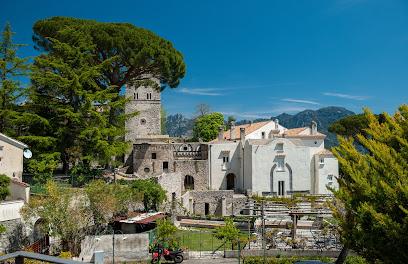
Chiesa del Gesù Nuovo
Explore the architectural wonder of Chiesa del Gesù Nuovo, a baroque masterpiece in Naples that showcases stunning art and rich history.
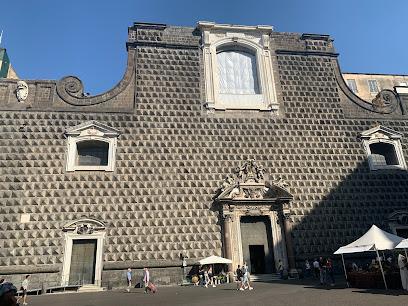
Complesso Monumentale di Santa Chiara
Explore the gothic elegance and tranquil beauty of Complesso Monumentale di Santa Chiara in Naples, a must-see for art and history enthusiasts.
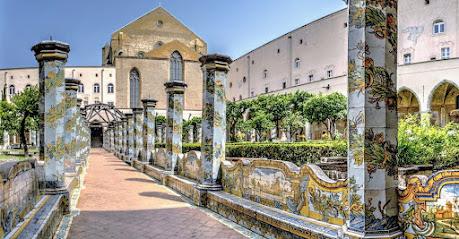
Murale Diego Armando Maradona - Quartieri Spagnoli
Immerse yourself in Naples' vibrant culture at the Murale Diego Armando Maradona, a stunning tribute to the legendary football icon.
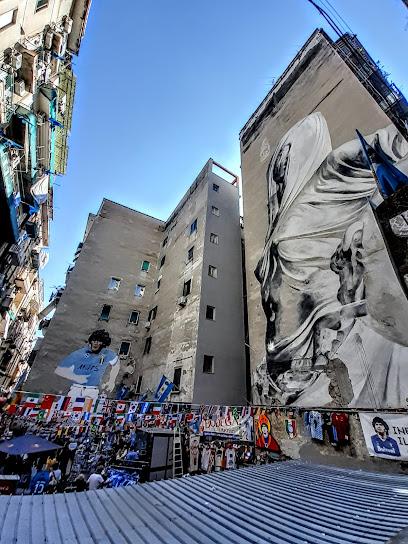
Essential places to dine
Ristorante Pizzeria Verginiello
Experience authentic Italian cuisine at Ristorante Pizzeria Verginiello in Capri—where every bite tells a story of tradition and flavor.

Lo Sfizio
Experience authentic Italian cuisine at Lo Sfizio in Capri - where every meal is a delightful journey through Mediterranean flavors.
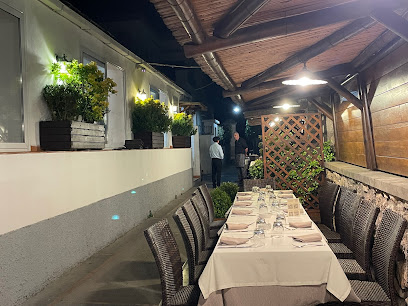
Ristorante Panorama Capri
Experience authentic Italian cuisine at Ristorante Panorama Capri, where exquisite dishes meet breathtaking views over the Mediterranean.
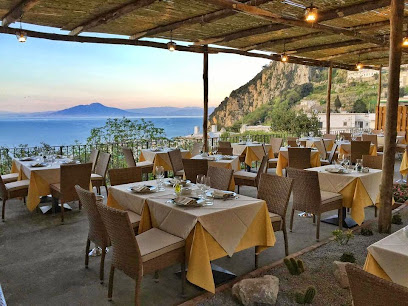
La Pigna
Experience exquisite Italian seafood at La Pigna in Capri - where authentic flavors meet breathtaking views.
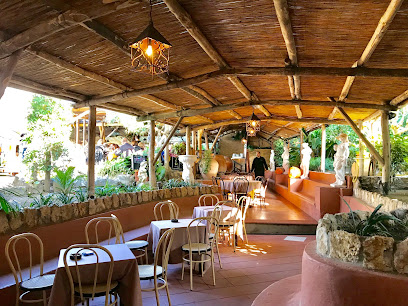
Al Caprí
Experience authentic Italian cuisine at Al Caprí in Capri—where every meal is a celebration of flavor and culture.

Da Paolino
Experience authentic Italian cuisine at Da Paolino in Capri, surrounded by enchanting lemon trees and breathtaking views.

Al Grottino
Experience authentic Italian cuisine at Al Grottino in Capri, where every dish tells a story and every meal is a celebration.
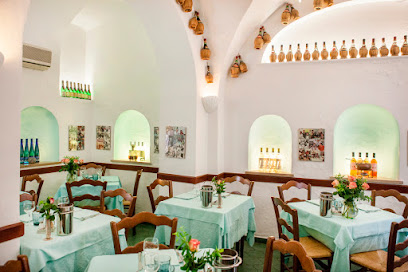
Ristorante - Pizzeria Longano
Experience authentic Italian cuisine at Ristorante - Pizzeria Longano in Capri – where tradition meets flavor amid stunning island views.
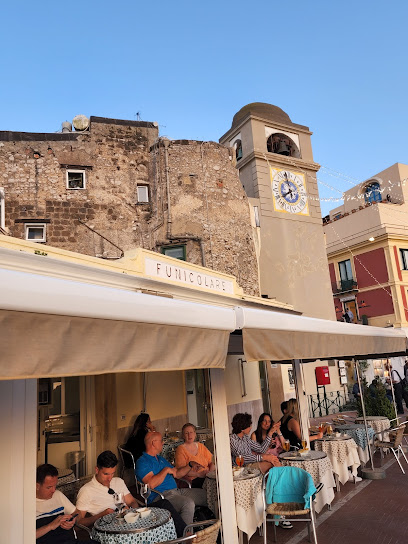
Villa Verde
Experience authentic Italian flavors at Villa Verde in Capri, where fresh ingredients meet breathtaking views.
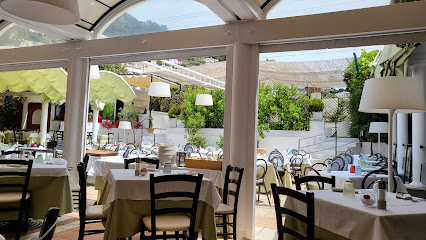
Le Camerelle
Discover culinary delights at Le Camerelle in Capri - where authentic Italian cuisine meets stunning island views.
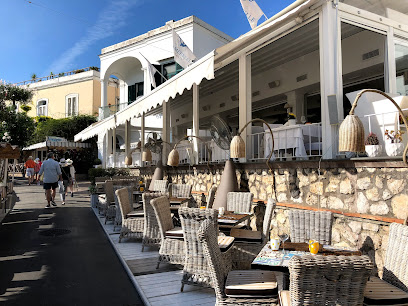
Le Grottelle
Experience authentic Italian cuisine at Le Grottelle in Capri – where every dish tells a story amidst stunning views.
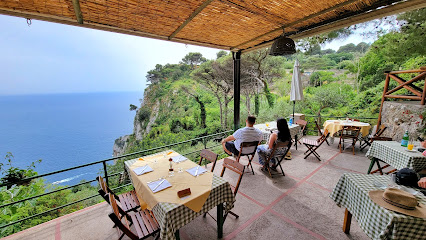
Ristorante Bagni Tiberio
Discover Ristorante Bagni Tiberio: Capri's premier destination for authentic Italian cuisine with stunning sea views.
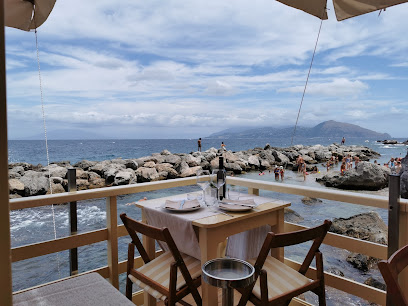
Ristorante Buca di Bacco
Discover authentic Italian flavors at Ristorante Buca di Bacco in Capri, where delicious pizzas meet stunning Mediterranean views.
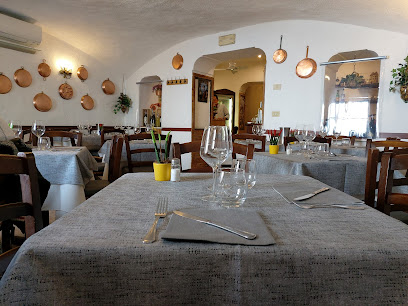
L'Angolo del Gusto - ristorante di cucina mediterranea Anacapri
Experience authentic Mediterranean flavors at L'Angolo del Gusto in Anacapri - where every dish tells a story.
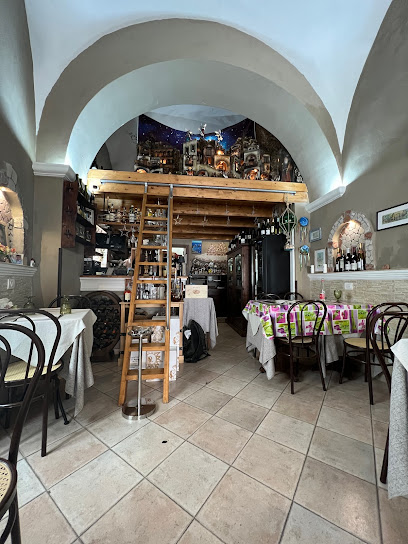
La capannina ristorante
Discover La Capannina Ristorante in Capri: where authentic Italian cuisine meets breathtaking views for an unforgettable dining experience.
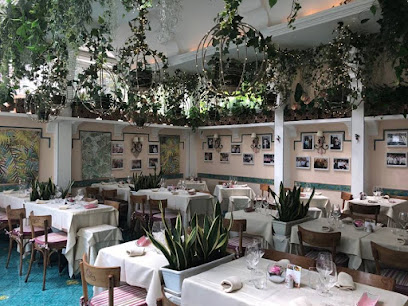
Markets, malls and hidden boutiques
Capri Watch
Discover the elegance of luxury timepieces at Capri Watch, where style meets craftsmanship on the stunning island of Capri.
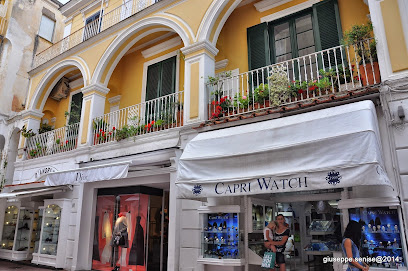
Gucci - Capri Camerelle
Discover luxury shopping at Gucci - Capri Camerelle, where elegance meets fashion in the stunning surroundings of Capri.
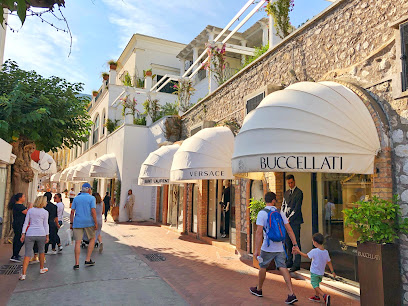
Louis Vuitton Capri Men
Explore the epitome of luxury shopping at Louis Vuitton Capri, featuring exquisite leather goods and fashion accessories in a stunning island setting.
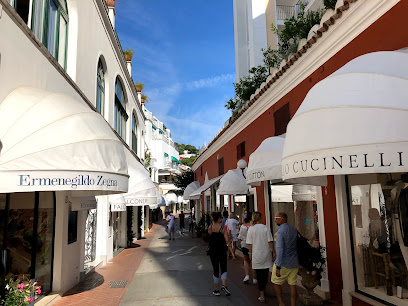
Prada Capri Via Roma
Discover high-end fashion and luxury at Prada Capri Via Roma, the ultimate shopping destination in the heart of Capri, Italy.
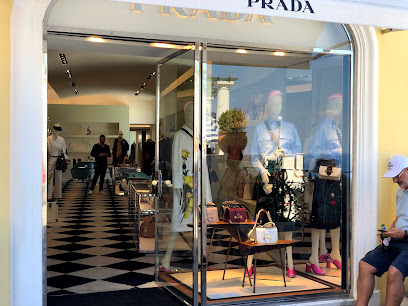
ISAIA Boutique - Capri
Explore the elegance of men's fashion at ISAIA Boutique in Capri, where tailored sophistication meets Italian craftsmanship.
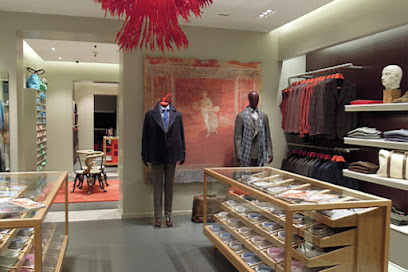
CAPRI WATCH
Explore luxury timepieces at Capri Watch, a premier shopping destination in the heart of Capri, Italy, offering exquisite craftsmanship and timeless elegance.
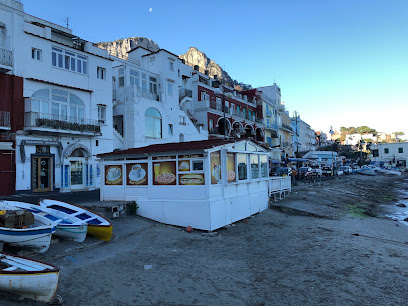
Hermès Capri
Explore the elegance of Hermès Capri, where luxury leather goods meet the enchanting beauty of the island.
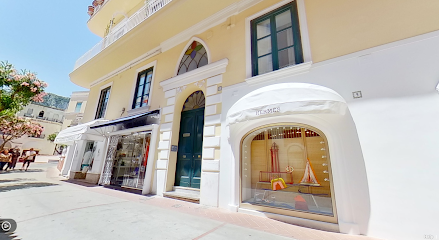
Canfora Capri Sandals
Discover the artistry of handcrafted sandals at Canfora Capri Sandals, a stylish destination on the enchanting island of Capri.
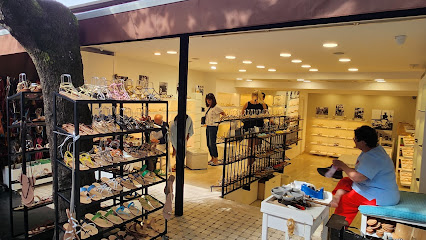
100% Capri
Discover luxury and style at 100% Capri, your go-to clothing store for men, women, and children on the enchanting island of Capri.
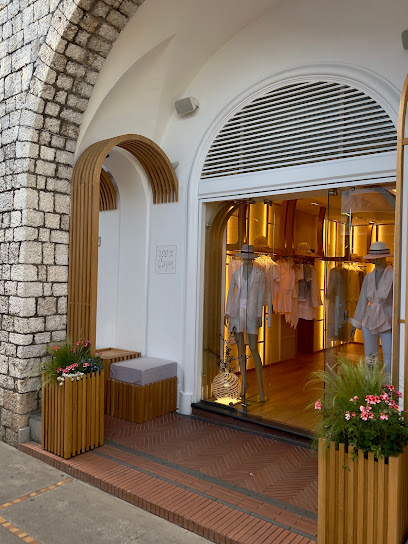
Capri Pride
Discover the artistry of handcrafted shoes and unique handicrafts at Capri Pride, a vibrant shopping destination in the heart of Capri.
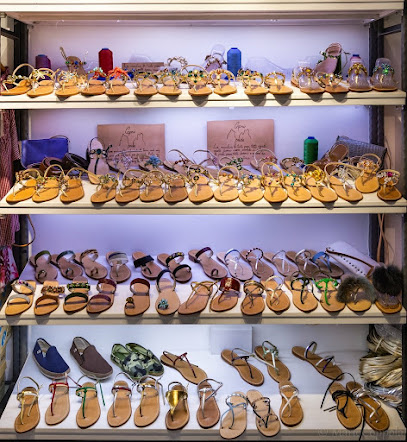
Dolce&Gabbana
Discover the luxurious Dolce&Gabbana boutique in Capri, offering exquisite women's and children's fashion amidst stunning island beauty.
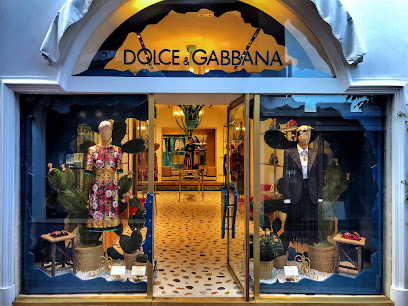
DIOR Capri Camerelle
Experience luxury and elegance at DIOR Capri Camerelle, where high fashion meets the beauty of Capri's enchanting atmosphere.
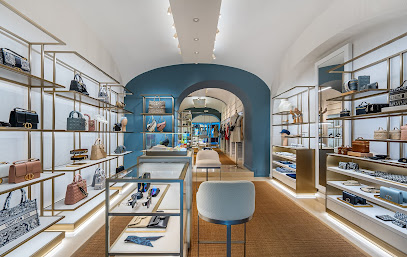
Il Caprito 16
Explore the unique offerings of Il Caprito 16 in Capri, where fashion meets local craftsmanship in a charming Mediterranean setting.
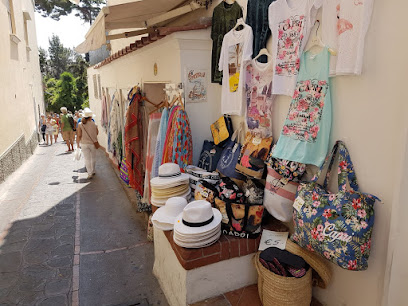
Balenciaga Capri
Explore luxury fashion with Balenciaga Capri, where elegance meets the breathtaking beauty of the island.
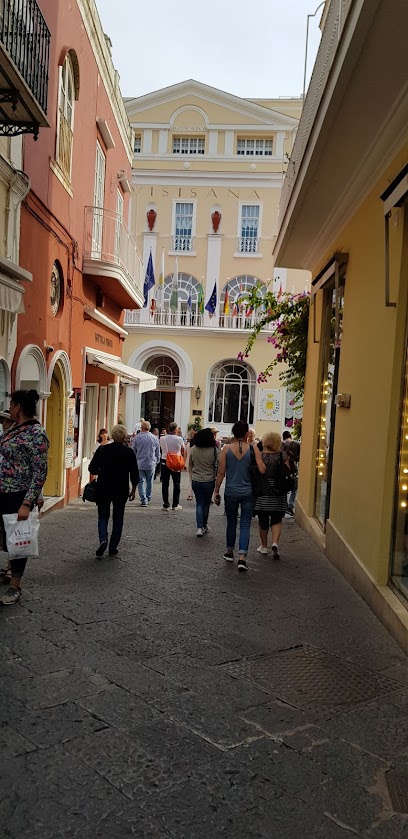
Masterpiece
Discover unique gifts and souvenirs that capture the essence of Capri at Masterpiece, a charming gift shop in the heart of this beautiful island.
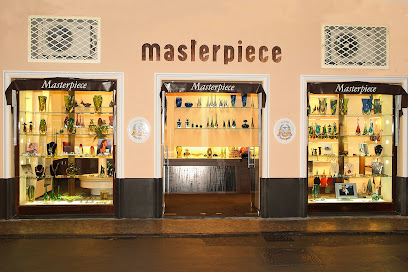
Essential bars & hidden hideouts
Bar Il Gabbiano
Discover Bar Il Gabbiano, a charming bar in Capri offering stunning views, local flavors, and a relaxing atmosphere for tourists to unwind.
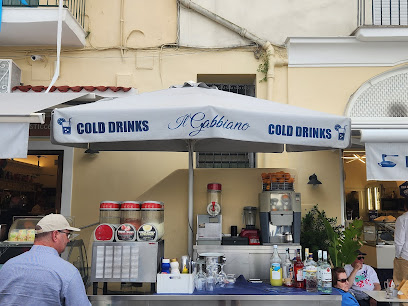
Capri Rooftop
Discover the elegance of Capri Rooftop, where exquisite cocktails meet breathtaking views of Capri's stunning coastline.
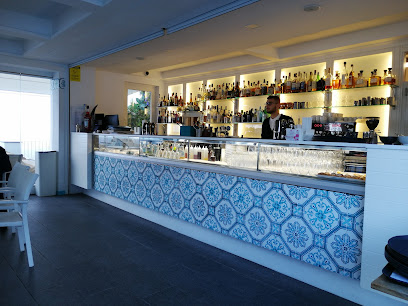
Hangout Capri
Experience the vibrant culinary scene at Hangout Capri, where Mediterranean flavors meet a lively pub atmosphere in the heart of Capri.
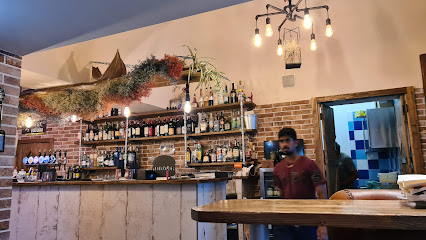
New Europa Bar Di Fabbrocino Domenico
Discover the vibrant atmosphere and exquisite flavors at New Europa Bar Di Fabbrocino Domenico, your perfect Capri getaway.

il Piccolo - Capri
Experience the charm of Capri at il Piccolo Bar, where delightful drinks and stunning views await in the heart of the island.
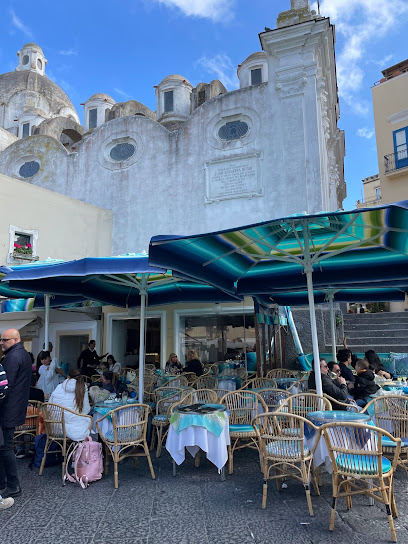
Bar Tiberio
Experience the vibrant atmosphere of Bar Tiberio in Capri, where refreshing drinks meet breathtaking views in a lively setting.
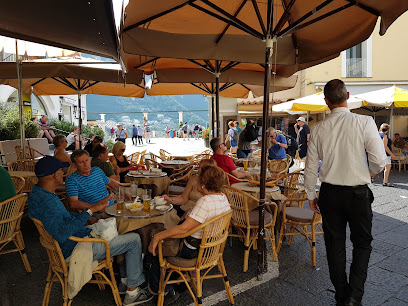
Bar Funicolare
Experience the charm of Capri at Bar Funicolare, where refreshing drinks and a welcoming atmosphere await you in the heart of the island.
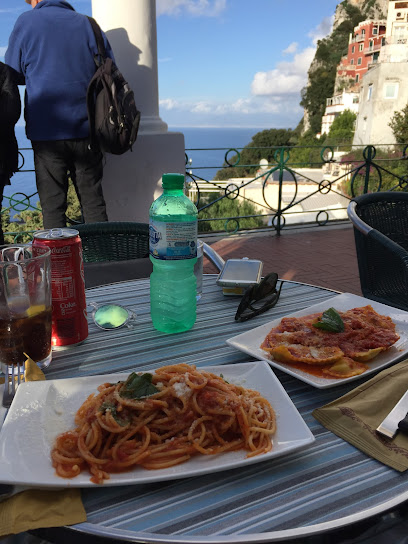
Taverna Anema e Core
Discover the heart of Capri's nightlife at Taverna Anema e Core, where live music and spirited ambiance create unforgettable evenings.
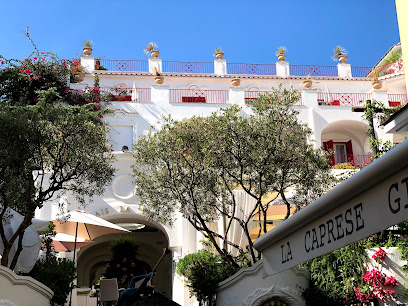
Bar Jovis
Experience the flavors of Capri at Bar Jovis, a charming bar offering fresh salads and sandwiches with stunning coastal views.
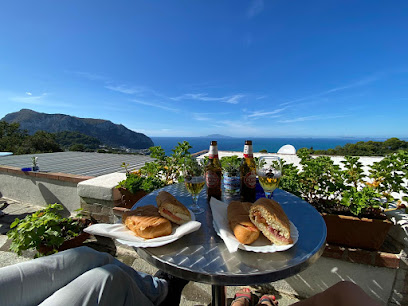
Bar Due Golfi Di Cataldo Roberto
Discover the charm of Capri at Bar Due Golfi, where refreshing drinks and stunning views await in a cozy atmosphere.
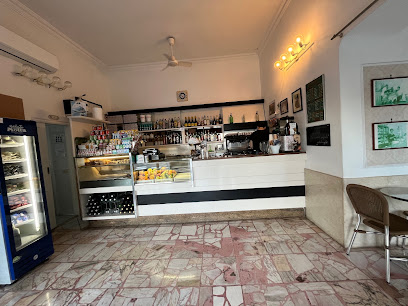
Qubè Cafè
Discover the lively spirit of Capri at Qubè Cafè, the perfect spot for drinks, music, and unforgettable memories.
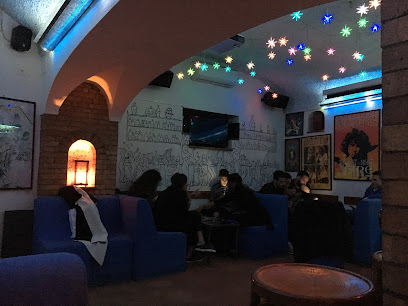
Salotto Bohèmien - Wine Lounge Terrace
Experience the elegance of Salotto Bohèmien, Capri's premier wine lounge terrace, offering exquisite wines and stunning Mediterranean views.
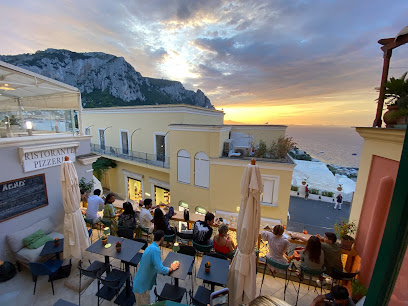
Bar La Pompeiana
Experience the vibrant atmosphere and exquisite flavors of Bar La Pompeiana, your ultimate retreat in the heart of Capri.
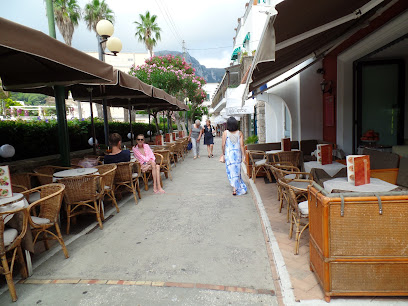
Bar Iolanda
Discover the charm of Capri at Bar Iolanda, where refreshing drinks and local flavors meet vibrant island life.
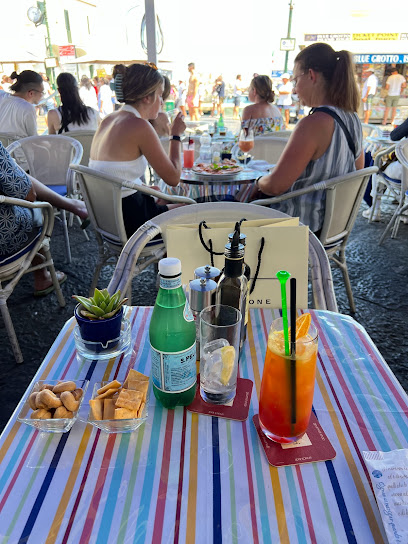
Jacky Bar
Jacky Bar in Capri: Savor exquisite cocktails and breathtaking views in the heart of this enchanting island.
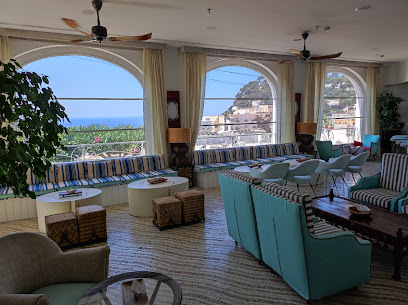
Travel experiences inspired by this city
Explore more travel diariesLocal Phrases
-
- HelloCiao
[chow] - GoodbyeArrivederci
[ah-ree-veh-dehr-chee] - YesSì
[see] - NoNo
[noh] - Please/You're welcomePer favore/Prego
[pehr fah-voh-reh/preh-goh] - Thank youGrazie
[gra-tsyeh] - Excuse me/SorryScusi/Mi dispiace
[skoo-zee/mee dees-pyah-cheh] - How are you?Come stai?
[koh-meh stah-ee] - Fine. And you?Bene. E tu?
[beh-neh. eh too] - Do you speak English?Parli inglese?
[pahr-lee een-gleh-zeh] - I don't understandNon capisco
[non kah-pee-skoh]
- HelloCiao
-
- I'd like to see the menu, pleaseVorrei vedere il menu, per favore
[vohr-ray veh-deh-reh eel meh-noo, pehr fah-voh-reh] - I don't eat meatNon mangio carne
[non mahn-joh kahr-neh] - Cheers!Salute!
[sah-loo-teh] - I would like to pay, pleaseVorrei pagare, per favore
[vohr-ray pah-gah-reh, pehr fah-voh-reh]
- I'd like to see the menu, pleaseVorrei vedere il menu, per favore
-
- Help!Aiuto!
[ah-yoo-toh] - Go away!Vai via!
[vah-ee vee-ah] - Call the Police!Chiama la polizia!
[kee-ah-mah lah poh-lee-tsyah] - Call a doctor!Chiama un dottore!
[kee-ah-mah oon doht-toh-reh] - I'm lostMi sono perso
[mee soh-no pehr-soh] - I'm illSto male
[stoh mah-leh]
- Help!Aiuto!
-
- I'd like to buy...Vorrei comprare...
[vohr-ray kohm-prah-reh] - I'm just lookingSto solo guardando
[stoh soh-loh gwar-dahn-doh] - How much is it?Quanto costa?
[kwahn-toh koh-stah] - That's too expensiveÈ troppo caro
[eh troh-poh kah-roh] - Can you lower the price?Puoi abbassare il prezzo?
[pwah-ee ahb-bah-sah-reh eel preh-tsoh]
- I'd like to buy...Vorrei comprare...
-
- What time is it?Che ore sono?
[keh oh-reh soh-noh] - It's one o'clockÈ l'una
[eh loo-nah] - Half past (10)Sono le dieci e mezza
[soh-noh leh dee-eh-chee eh meh-tsah] - MorningMattina
[maht-tee-nah] - AfternoonPomeriggio
[poh-meh-ree-joh] - EveningSera
[seh-rah] - YesterdayIeri
[yeh-ree] - TodayOggi
[oh-jee] - TomorrowDomani
[doh-mah-nee] - 1Uno
[oo-noh] - 2Due
[dweh] - 3Tre
[treh] - 4Quattro
[kwah-troh] - 5Cinque
[cheen-kweh] - 6Sei
[say] - 7Sette
[seht-teh] - 8Otto
[oh-ttoh] - 9Nove
[noh-veh] - 10Dieci
[dee-eh-chee]
- What time is it?Che ore sono?
-
- Where's a/the...?Dov'è...?
[doh-veh] - What's the address?Qual è l'indirizzo?
[kwahl eh leen-dee-reet-soh] - Can you show me (on the map)?Puoi mostrarmi (sulla mappa)?
[pwah-ee moh-stahr-mee soo-lah mahp-pah] - When's the next (bus)?Quando c'è il prossimo (autobus)?
[kwahn-doh cheh eel prohs-see-moh ow-toh-boo] - A ticket (to ....)Un biglietto (per ....)
[oon beel-yet-toh pehr]
- Where's a/the...?Dov'è...?
History of Capri
-
Capri's history dates back to ancient times when it was first inhabited by the Greeks in the 8th century BC. Known as 'Kapros,' the island was valued for its strategic location and natural beauty. The Greeks established settlements and introduced their culture, which laid the groundwork for future civilizations on the island.
-
Capri achieved prominence during the Roman era, particularly under Emperor Augustus, who visited the island in 29 BC. Augustus was so captivated by Capri that he exchanged the larger island of Ischia for it. His successor, Emperor Tiberius, built twelve lavish villas on the island, the most famous being Villa Jovis. Tiberius ruled the Roman Empire from Capri for the last decade of his reign, making the island a center of power and opulence.
-
After the fall of the Roman Empire, Capri experienced a period of decline and frequent pirate incursions. During the medieval period, the island was controlled by various Lombard, Norman, and Angevin rulers. The construction of defensive structures, such as the Castello Barbarossa, was essential to protect the inhabitants from pirate raids and invasions.
-
In the 16th century, Capri came under Spanish control as part of the Kingdom of Naples. During this time, the island faced continuous threats from Ottoman pirates. The inhabitants fortified the island and built watchtowers, such as the Torre della Guardia, to defend against these attacks. Despite these challenges, Capri continued to be a place of agricultural productivity and modest trade.
-
The 19th century marked a significant turning point in Capri's history. The island was rediscovered by European artists, writers, and aristocrats who were enchanted by its natural beauty and idyllic landscape. Notable figures, such as the German painter August Kopisch, who rediscovered the Blue Grotto in 1826, helped to popularize Capri as a travel destination. This era saw the rise of Capri as a haven for the elite and contributed to its reputation as a cultural and artistic hub.
-
Throughout the 20th century, Capri continued to attract famous personalities, including writers, filmmakers, and celebrities. The island became synonymous with luxury and glamour, drawing visitors from around the world. The construction of hotels, restaurants, and other tourist facilities transformed Capri into a premier travel destination. Despite its modern developments, Capri has managed to preserve its historical charm and natural beauty, making it a unique blend of the past and present.
Capri Essentials
-
Capri is accessible by ferry or hydrofoil from Naples, Sorrento, and other parts of the Amalfi Coast. The main ferry terminals are Molo Beverello and Calata di Massa in Naples, and Marina Piccola in Sorrento. The journey from Naples takes about 40-80 minutes, while from Sorrento, it takes about 20-40 minutes. During the summer, additional routes and services are available.
-
Capri is best explored on foot, but there are also taxis, buses, and a funicular railway that connects Marina Grande to Capri town. The island has limited car access, so renting a car is not recommended. For longer trips, consider using the local buses or taxis, which are often open-top and offer stunning views. The funicular is a quick and scenic way to travel between the marina and the town center.
-
The official currency in Capri is the Euro (EUR). Credit and debit cards are widely accepted in hotels, restaurants, and shops. However, it's advisable to carry some cash for smaller establishments, local markets, and tips. ATMs are available in Capri town and Anacapri, but it's a good idea to withdraw enough cash before heading to more remote parts of the island.
-
Capri is generally a safe destination for tourists, with low crime rates. However, it's always wise to take standard precautions. Avoid leaving your belongings unattended, especially in crowded areas like the Marina Grande and Piazza Umberto I. Petty theft, such as pickpocketing, can occur in busy tourist spots, so stay vigilant. There are no specific high-crime areas targeting tourists.
-
In case of an emergency, dial 112 for immediate assistance. Capri has a hospital, Ospedale Capilupi, located in Capri town, which provides medical services. Pharmacies are also available across the island for minor health issues. Ensure you have travel insurance that covers medical emergencies. For urgent medical care, the hospital can arrange for air evacuation to Naples if necessary.
-
Fashion: Do dress stylishly, as Capri is known for its fashion-conscious locals and visitors. Avoid overly casual attire. Religion: Do respect local customs and dress modestly when visiting churches. Public Transport: Do use the funicular and buses for convenient travel. Don't try to drive, as car access is limited. Greetings: Do greet with a simple 'Buongiorno' (Good morning) or 'Buonasera' (Good evening). Eating & Drinking: Do try local specialties like Caprese salad and Limoncello. Don't rush through meals; dining is a leisurely affair.
-
To experience Capri like a local, visit early in the morning or late in the afternoon to avoid the midday tourist crowds. Explore the lesser-known paths and trails, such as the Pizzolungo walk, for stunning views and serenity. Engage with locals at traditional bars and cafes. Don't miss the Blue Grotto, but also consider visiting the Green Grotto for a less crowded experience. Shop for handmade sandals and local crafts in Anacapri for unique souvenirs.
Nearby Cities to Capri
-
Things To Do in Sorrento
-
Things To Do in Positano
-
Things To Do in Herculaneum
-
Things To Do in Pompeii
-
Things To Do in Amalfi
-
Things To Do in Ravello
-
Things To Do in Naples
-
Things To Do in Matera
-
Things To Do in Rome
-
Things To Do in St. Peter's Square
-
Things To Do in Vatican Necropolis
-
Things To Do in Apostolic Palace
-
Things To Do in St. Peter's Basilica
-
Things To Do in Sistine Chapel
-
Things To Do in Gregorian Etruscan Museum















